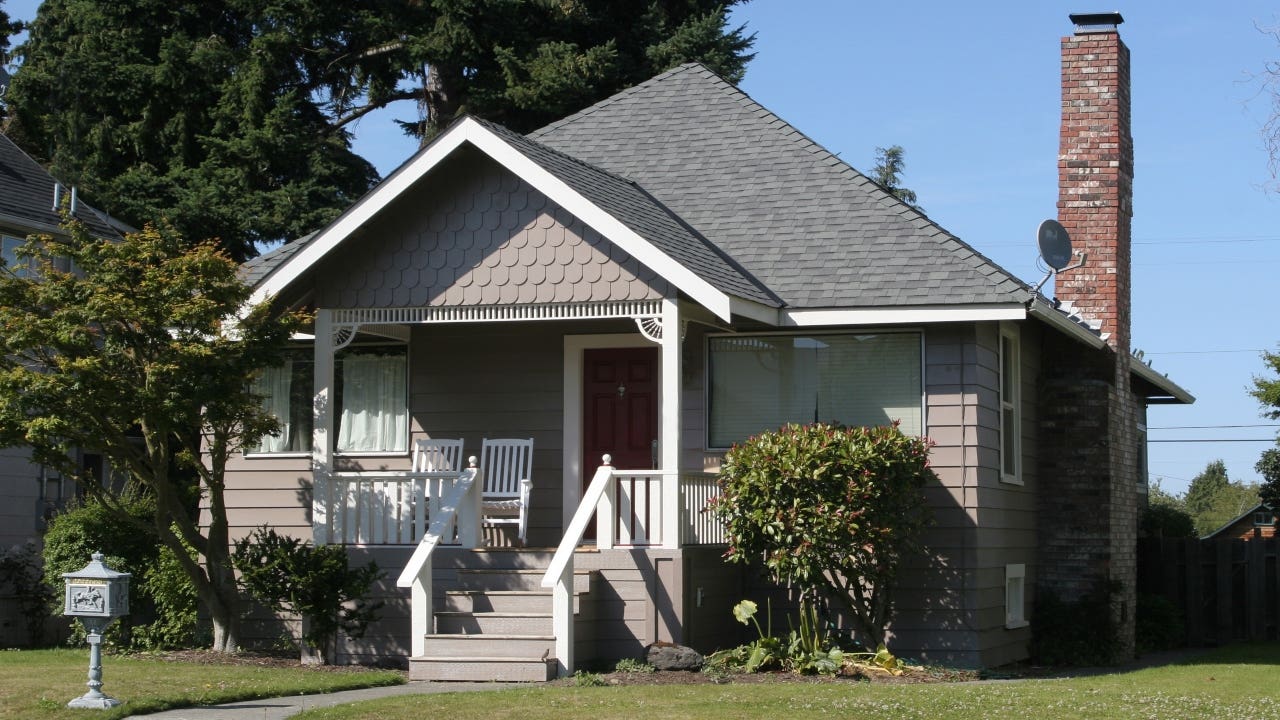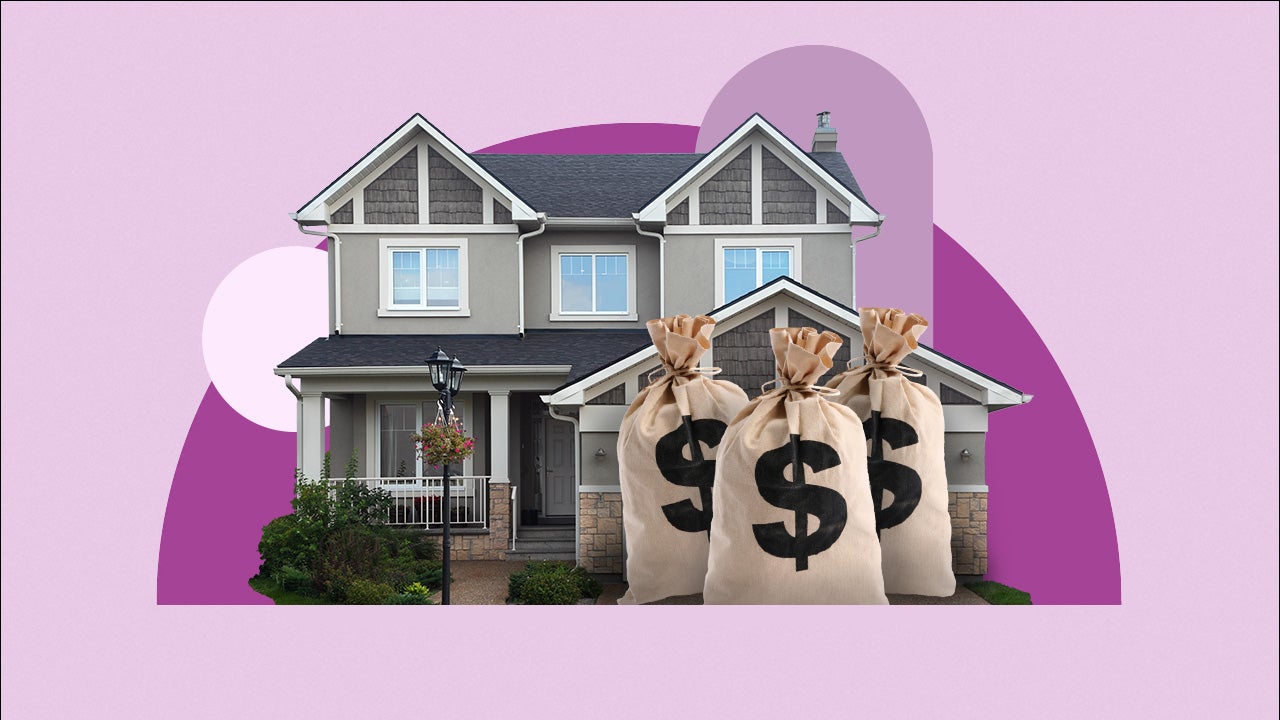What is the typical down payment on a house?




Key takeaways
- Down payment amounts vary widely throughout the U.S., from less than $20,000 to $200,000 or more.
- Most housing market data focuses on the median down payment, rather than the average, because it’s is a better measure of what the typical borrower contributes.
- As of July 2025, the median down payment on a home in the U.S. was $62,000 — that’s about 16% of the median purchase price.
If you’re thinking about buying a home, you may assume you need a 20 percent down payment. But while that number has been considered the standard for many years, most mortgages don’t require a 20 percent down payment — and it’s definitely not typical for homebuyers today. Here are the numbers you’ll need to know when setting your down payment savings goal.
What is the average down payment on a house?
$62K
Source: ATTOM
In July 2025, the median down payment on a home in the U.S. was $62,000, according to research from real estate data firm ATTOM. That’s just below 16 percent of the median sale price of a home in the U.S. at the time.
But that figure includes all buyers. If you dig a bit deeper, the median down payment varies quite a bit based on a buyer’s history. For example, repeat buyers — those who have previously owned a home — make a median down payment of 18 percent, while first-time buyers make a median down payment of 9 percent, according to 2024 data from the National Association of Realtors.
The housing market is constantly evolving, and so is the typical down payment. As you can see on the chart below, as property values have soared in recent years, so has the amount people tend to put down on their mortgages.
Average vs. median down payment
While you might be searching for the average down payment on a house, most housing experts focus on the median. Why? The median — which is the middle value in a data set — is a better indicator of what’s typical. The average, on the other hand, can be skewed by borrowers making unusually high or unusually low down payments.
Down payments by state
-
State Median down payment (July 2025) Alabama $37,300 Alaska N/A Arizona $68,500 Arkansas $29,200 California $160,600 Colorado $118,544 Connecticut $90,225 Delaware $75,000 District of Columbia $250,000 Florida $60,000 Georgia $50,000 Hawaii $820,000 Idaho $67,900 Illinois $40,000 Indiana $48,542 Iowa $30,000 Kansas $71,250 Kentucky $34,250 Louisiana $21,825 Maine $71,300 Maryland $79,500 Massachusetts $139,750 Michigan $33,000 Minnesota $55,000 Mississippi $15,800 Missouri $36,250 Montana N/A Nebraska $41,987 Nevada $75,000 New Hampshire $99,000 New Jersey $118,500 New Mexico $59,625 New York $82,525 North Carolina $64,000 North Dakota $33,106 Ohio $31,425 Oklahoma $27,600 Oregon $94,000 Pennsylvania $47,000 Rhode Island $89,400 South Carolina $58,870 South Dakota $46,875 Tennessee $50,000 Texas $15,000 Utah $202,000 Vermont N/A Virginia $72,000 Washington $126,000 West Virginia $20,944 Wisconsin $50,000 Wyoming N/A Note: Data was unavailable for Alaska, Montana, Vermont and Wyoming. Source: ATTOM
Down payment requirements for different mortgage types
The minimum amount you’ll need for a down payment depends on the cost of the home and the type of mortgage you have. The requirements range from no down payment at all to 10 percent or more. Here’s an overview of the most common loan types and their minimum down payments:
- Conventional loan (conforming): 3%
- Adjustable-rate loan (conforming): 5%
- Jumbo loan: typically 10%
- FHA loan: 3.5%
- VA loan: none
- USDA loan: none
Average down payment by age
In general, the younger the buyer, the smaller the down payment. Older buyers are more likely to be able to sell a previous home to fund a down payment or have had more working years in which to save up for the purchase. Here is the typical down payment on a house by age group:
| Homebuyer age group | Median down payment percentage |
|---|---|
|
26-34 years old |
10% |
|
35-44 years old |
14% |
|
45-59 years old |
17% |
|
60-69 years old |
28% |
|
70-78 years old |
36% |
|
79-99 years old |
38% |
| Source: National Association of Realtors |
How much does a down payment on a house cost?
Making the minimum down payment is always an option, but there are benefits to putting down more. The larger your down payment, the less you’ll need to borrow and the lower your monthly payments and total interest costs. You’re also more likely to get a better interest rate on your mortgage with a larger down payment. And it translates into more equity in the home to start — a tappable asset, as well as a potential safeguard against any decline in home value.
Although 20 percent is not required by lenders, if you can put that amount down on a conventional mortgage, you’ll avoid paying for private mortgage insurance (PMI), which is an extra charge tacked onto your monthly payment until you reach 20 percent equity in your home.
If you’re struggling to save for a down payment, look into down payment assistance programs in your area. Many cities, counties and states offer loans and grants to help you afford a down payment or closing costs, so you won’t need to pay as much out of pocket.
Ultimately, whether you decide to put down more than the minimum depends on your finances and what will make you feel most comfortable. If you’ve been renting for a while and have limited savings, pulling together at least the minimum down payment might be preferable to continuing to rent, especially if your housing needs have changed. Buying a home sooner rather than later also moves you quicker into wealth-building territory, acquiring an asset you can pass down to future generations.
Down payment examples
We’ve done the math to help you estimate your down payment at various price points.
| Home price | 3% down | 10% down | 20% down |
|---|---|---|---|
| $200,000 | $6,000 | $20,000 | $40,000 |
| $300,000 | $9,000 | $30,000 | $60,000 |
| $400,000 | $12,000 | $40,000 | $80,000 |
| $500,000 | $15,000 | $50,000 | $100,000 |
| $600,000 | $18,000 | $60,000 | $120,000 |
| $700,000 | $21,000 | $70,000 | $140,000 |
| $800,000 | $24,000 | $80,000 | $160,000 |
| $900,000 | $27,000 | $90,000 | $180,000 |
| $1 million | $30,000 | $100,000 | $200,000 |
FAQs
Additional reporting by Maya Dollarhide
Why we ask for feedback Your feedback helps us improve our content and services. It takes less than a minute to complete.
Your responses are anonymous and will only be used for improving our website.



